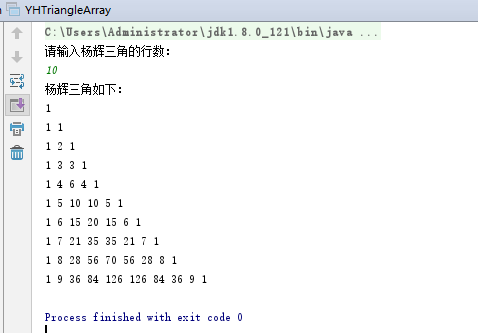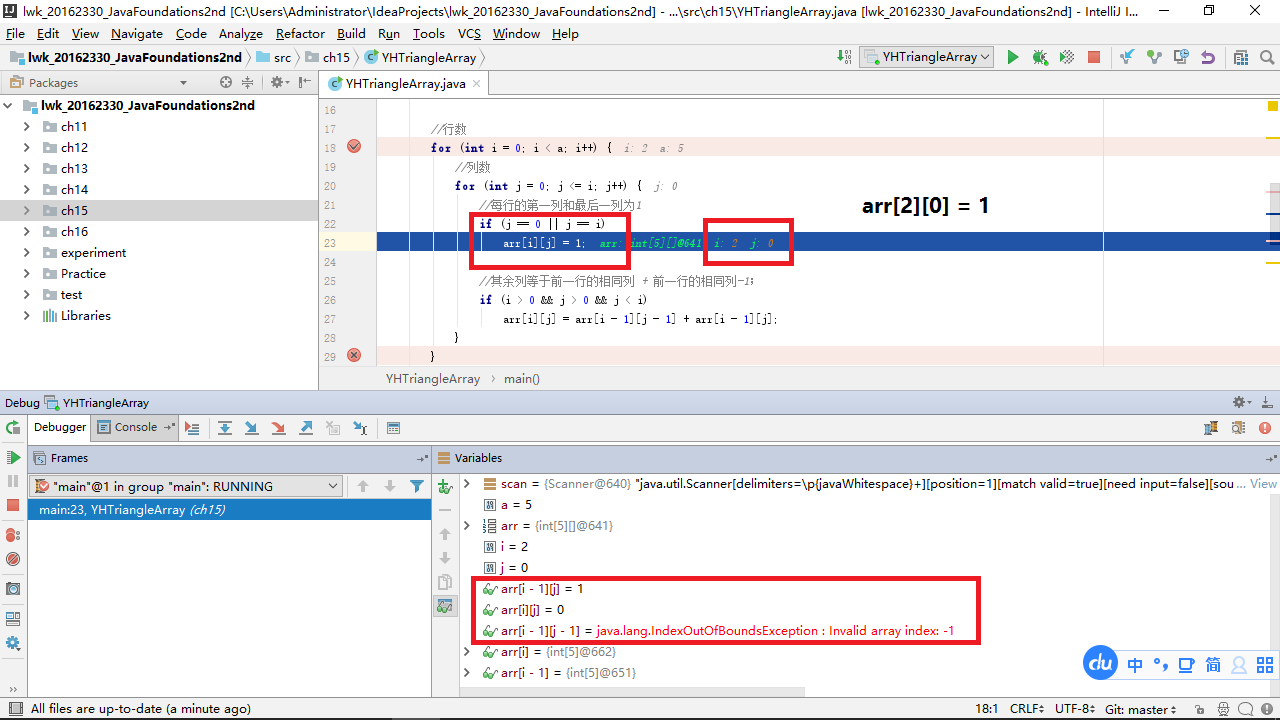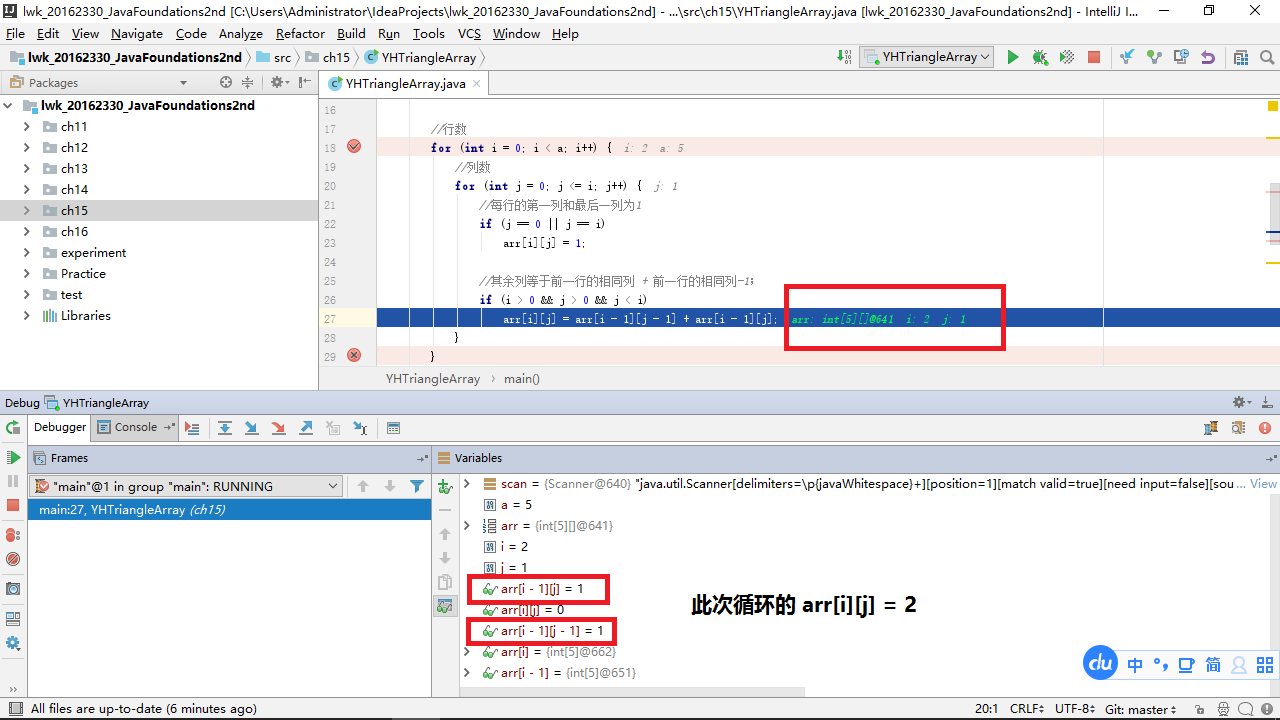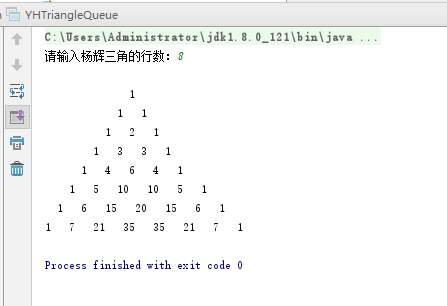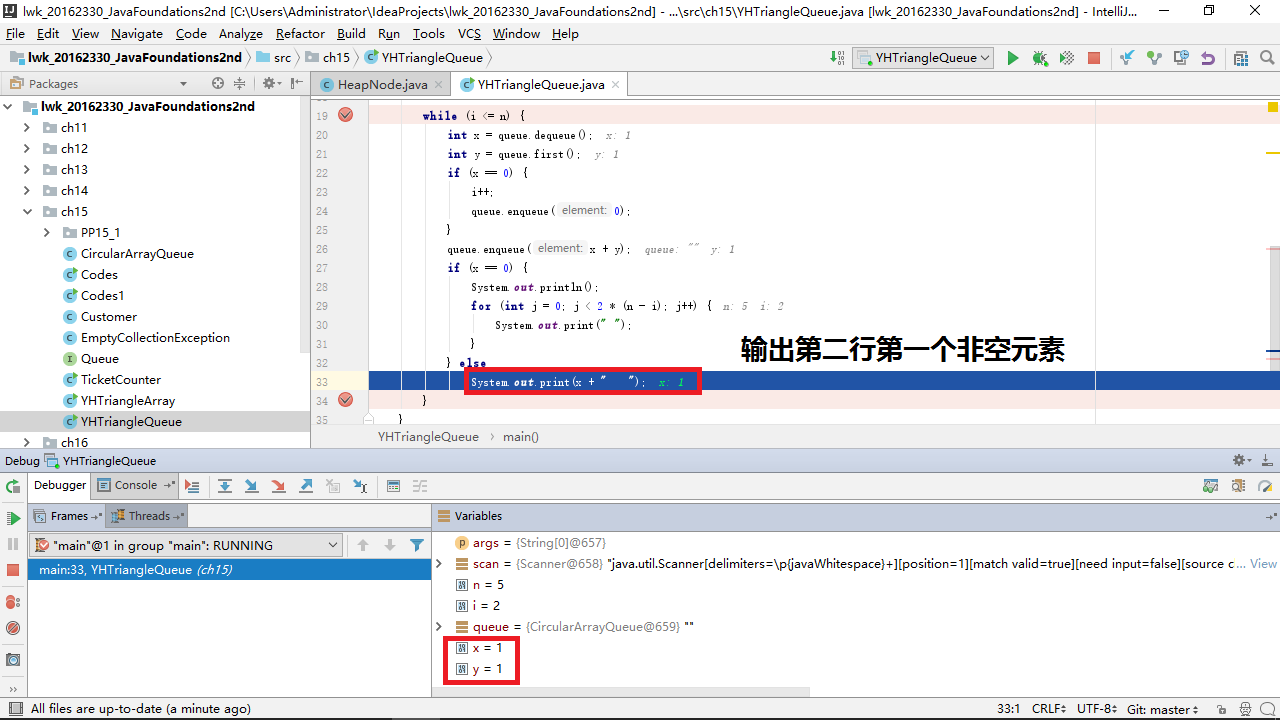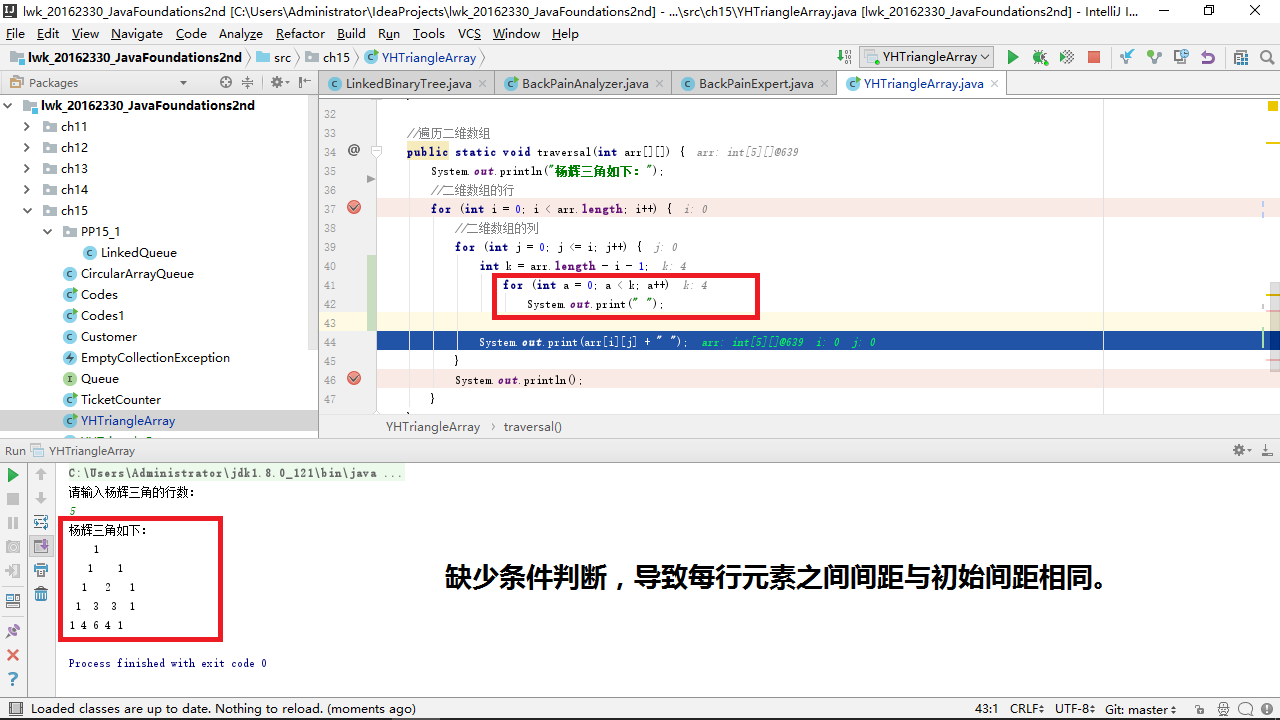20162330 第六周 蓝墨云班课 队列加分项
作业要求
- 1 用循环队列实现
2 参考PPT用循环队列打印杨辉三角
3 用JDB或IDEA单步跟踪排队情况,画出队列变化图,包含自己的学号信息
4 把代码推送到代码托管平台
5 把完成过程写一篇博客:重点是单步跟踪过程和遇到的问题及解决过程
6 提交博客链接
设计思路
-
杨辉三角的特点:
① 第 i 行有 i 个元素;
② 每一行的第一个元素和最后一个元素都为1;
③ 除了1之外,每个元素的值,都等于上一行同位置的元素以及前一个元素的和。 -
考虑到这些特点,我们可以使用“坐标”的方式,即使用二维数组实现,但是这种方法占用的空间较大,并且计算次数较多;
-
使用循环队列实现可以节省一定空间,如果要求计算并输出杨辉三角前 n 行的值,则队列的最大空间应为 n+2。
代码实现
- 二维数组实现:
public class YHTriangleArray {
public static void main(String[] args) {
Scanner scan = new Scanner(System.in);
System.out.println("请输入杨辉三角的行数:");
int a = scan.nextInt();
//定义二维数组存放杨辉三角
int arr[][] = new int[a][a];
//行数
for (int i = 0; i < a; i++) {
//列数
for (int j = 0; j <= i; j++) {
//每行的第一列和最后一列为1
if (j == 0 || j == i)
arr[i][j] = 1;
//其余列等于前一行的相同列 + 前一行的相同列-1;
if (i > 0 && j > 0 && j < i)
arr[i][j] = arr[i - 1][j - 1] + arr[i - 1][j];
}
}
traversal(arr);
}
//遍历二维数组
public static void traversal(int arr[][]) {
System.out.println("杨辉三角如下:");
//二维数组的行
for (int i = 0; i < arr.length; i++) {
//二维数组的列
for (int j = 0; j <= i; j++) {
int k = arr.length - i - 1;
//居中排列
if (j == 0) {
for (int a = 0; a < k; a++)
System.out.print(" ");
}
System.out.print(arr[i][j] + " ");
}
System.out.println();
}
}
}
- 循环队列实现:
public class YHTriangleQueue {
public static void main(String args[]) {
Scanner scan = new Scanner(System.in);
System.out.print("请输入杨辉三角的行数:");
int n = scan.nextInt();
int i = 0;
CircularArrayQueue<Integer> queue = new CircularArrayQueue<>();
//初始值设置为 0,1
queue.enqueue(0);
queue.enqueue(1);
while (i <= n) {
int x = queue.dequeue();
int y = queue.first();
if (x == 0) {
i++; //每次 x = 0 时行数加一
queue.enqueue(0);
}
queue.enqueue(x + y); //上一轮输出值与检测值之和,相当于前一行相邻的两元素之和
if (x == 0) {
System.out.println(); //删除 0 相当于换行
for (int j = 0; j < 2 * (n - i); j++) { //根据具体变化动态输出空字符串
System.out.print(" ");
}
} else
System.out.print(x + " "); //根据具体变化动态输出空字符串
}
}
}
运行结果及单步跟踪过程
简易变化图
-
二维数组实现:

-
循环队列实现:
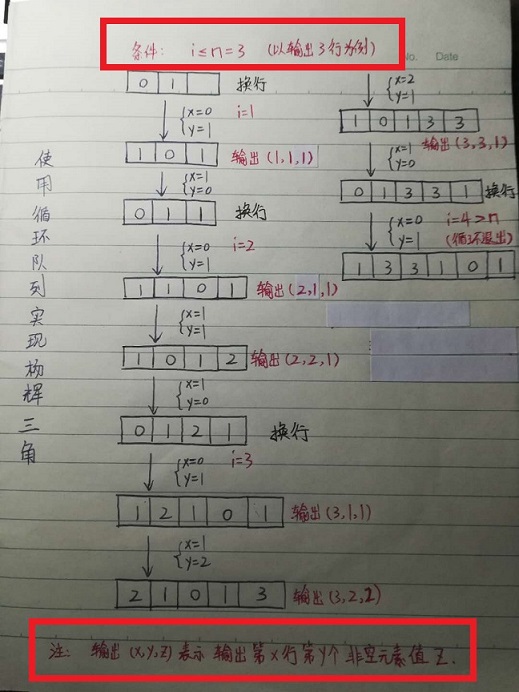
【注】输出 (x,y,z) 表示输出第 x 行中第 y 个非空的元素值 z .

